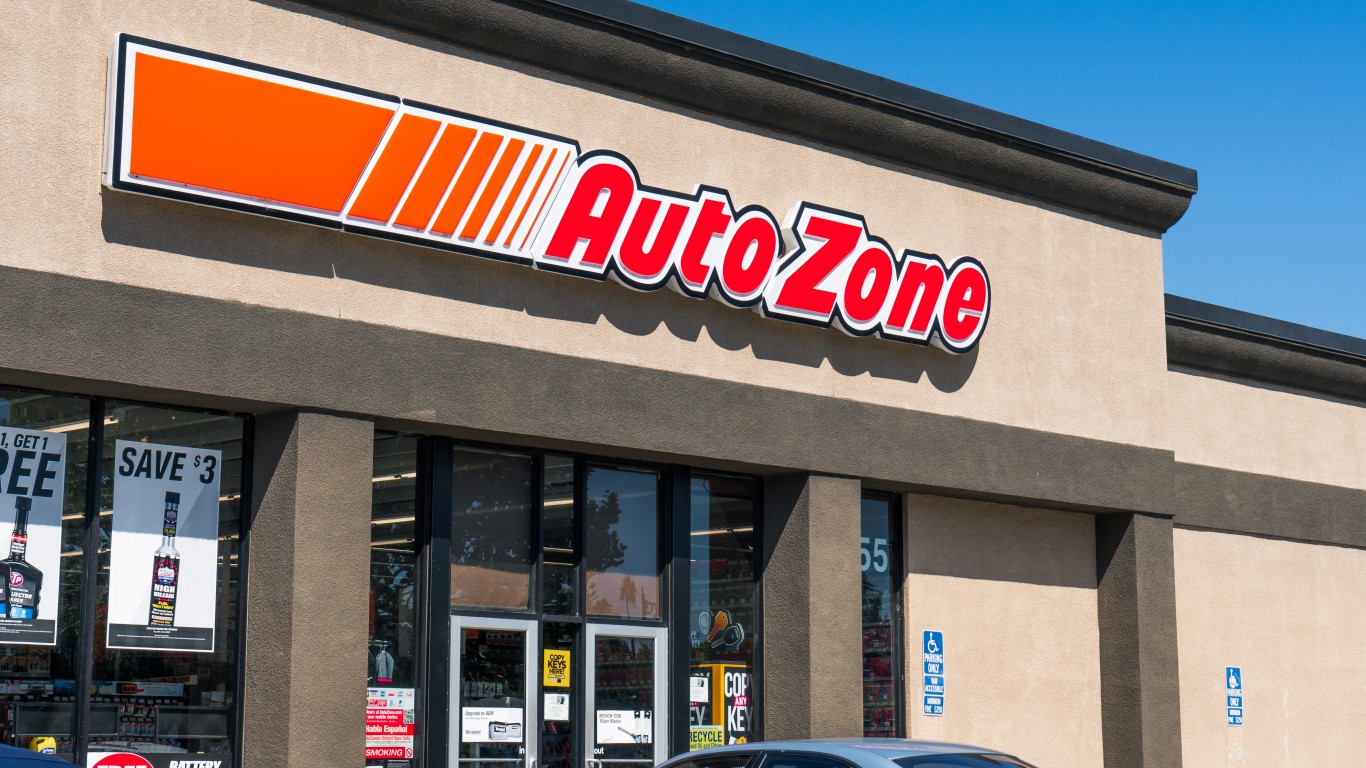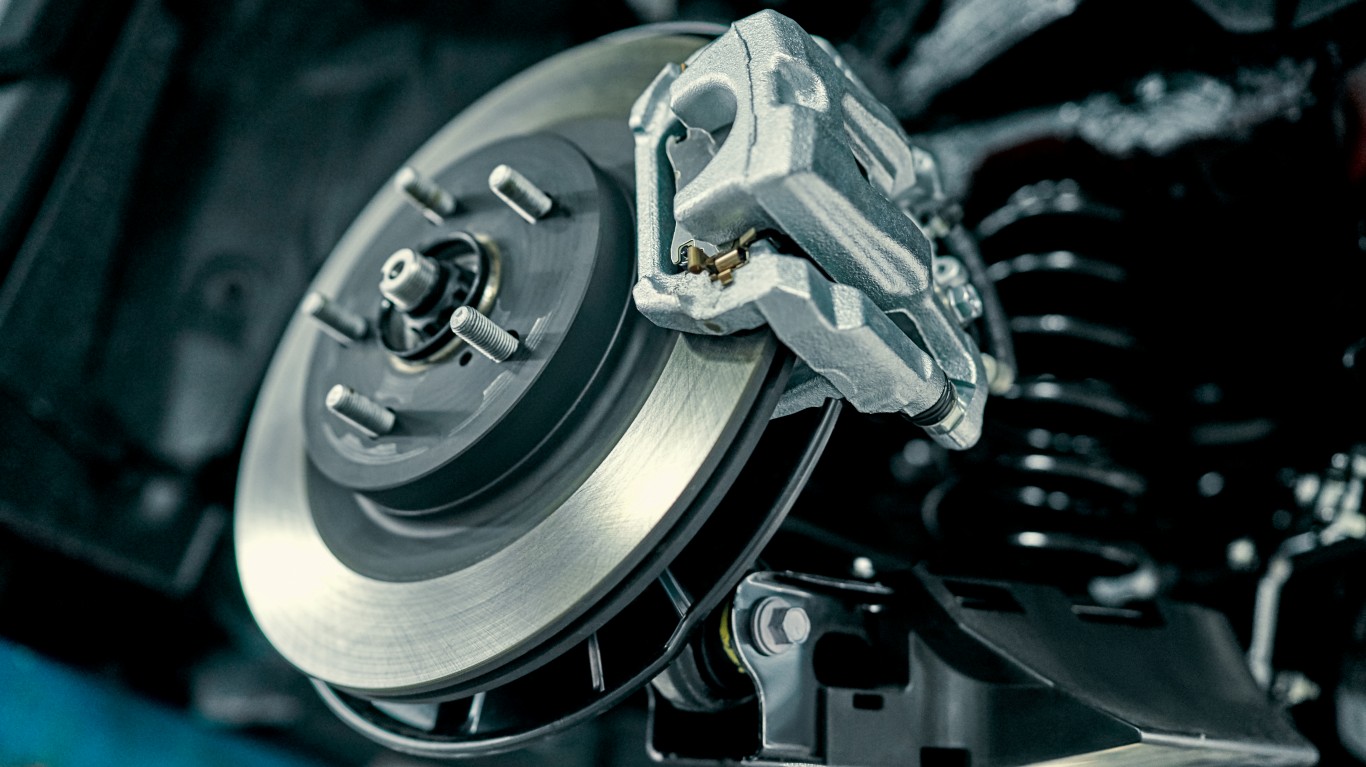
History credits Henry Ford with inventing the automobile assembly line. The notion of having a different workstation be responsible for a specific part in a precisely sequenced assembly protocol is a fundamental principle behind mass production and large product manufacturing.
Nevertheless, mechanical auto parts are susceptible to excessive wear, breakdown, damage, and other conditions that can require replacement. For many years, these parts would have to be ordered directly from a manufacturer, unless a mechanic had spare or refurbished replacement parts on hand. While local third party auto replacement parts suppliers could be found in various states, Autozone Inc. (NYSE: AZO) was the first one to be able to take its chain nationally.
At the time of this writing, AutoZone has a $52 billion market cap and is up over 200% in the past five years, and even more if one has held stock going back to 2000. The time may be ripe for AutoZone to announce a forward stock split; let’s take a look at some of the reasons:
Growth and More Growth

Founded by J.R. “Pitt” Hyde in 1979, as Auto Shack, Hyde grew his business from 1 location in Forrest City, AR to 7 states by 1981, and 263 stores in 14 states by 1985. This trajectory would continue until 2000, at which point AutoZone aggressively would expand to the entire US and outlying territories, as well as internationally to Mexico, Canada and Brazil, totalling over 7,100 stores by the end of 2023.
Not all the growth was internally driven. AutoZone also made several strategic acquisitions with synergies that contributed to better efficiencies and productivity. Alldata, an OEM information center for automobile service and collision data, was purchased in 1996. Smaller competitor Auto Palace and its 112 outlets was acquired in 1998. Online auto parts rival AutoAnything was merged into AutoZone in 2012. Interamerican Motor Corporation, the second largest US importer of European and Asian car parts, was acquired in 2014. Other acquisitions include Truck Pro, L.P., Chief Auto Parts, Inc., and 100 locations from competitor The Pep Boys – Manny, Moe & Jack.
Home Grown Innovation and Branding

AutoZone takes credit for introducing the first first auto parts quality control program in 1984. In 1985, AutoZone began to also cater to the DIY market. They instituted programs like Loan-A-Tool for those who wanted to repair or customize their cars but couldn’t justify purchasing specialized tools that might only be needed for a day or two. Autozone would also keep its business on the cutting edge of tech, instituting computerized store management in 1989 and deploying satellites for intra-office and store communications as early as 1994. It launched its online sales and marketing only two years later.
AutoZone unveiled its own “Duralast” brand of alternators and starters in 1986. The Duraline brand’s reputation for reliability has since allowed the brand’s catalog to include a variety of popular batteries and a custom tool line.
Justifications For AutoZone to Announce a Forward Stock Split This Year
- AutoZone’s stock price at the time of this writing is $3,027.12 per share. Five years ago, the stock was trading at $1,060.00, ten years ago, it was at $512.00, and twenty years ago it was at $84.30. Continued growth in revenues and earnings have reflected in the stock price going up exponentially.
- AutoZone enacted a 2-for-1 forward split in 1992 and another one in 1994. The company has not had another split in 30 years.
- AutoZone is habitually cash rich, and has generated cash flow growth of 11.9%, with expected cash flow expansion of 5.3% in 2024.
- AutoZone’s foreign expansions are continuing, and show no signs of abatement at this time.
- Roughly 93% of AZO stock is held by institutions, leaving a very small percentage of the float available to the genuine public, and at a relatively unaffordable price for the average individual investor. A 10-for-1 forward split would reduce stock to a more manageable $300 per share and increase the float for greater market liquidity purposes as well.
It’s Your Money, Your Future—Own It (sponsor)
Retirement can be daunting, but it doesn’t need to be.
Imagine having an expert in your corner to help you with your financial goals. Someone to help you determine if you’re ahead, behind, or right on track. With SmartAsset, that’s not just a dream—it’s reality. This free tool connects you with pre-screened financial advisors who work in your best interests. It’s quick, it’s easy, so take the leap today and start planning smarter!
Don’t waste another minute; get started right here and help your retirement dreams become a retirement reality.
Thank you for reading! Have some feedback for us?
Contact the 24/7 Wall St. editorial team.





